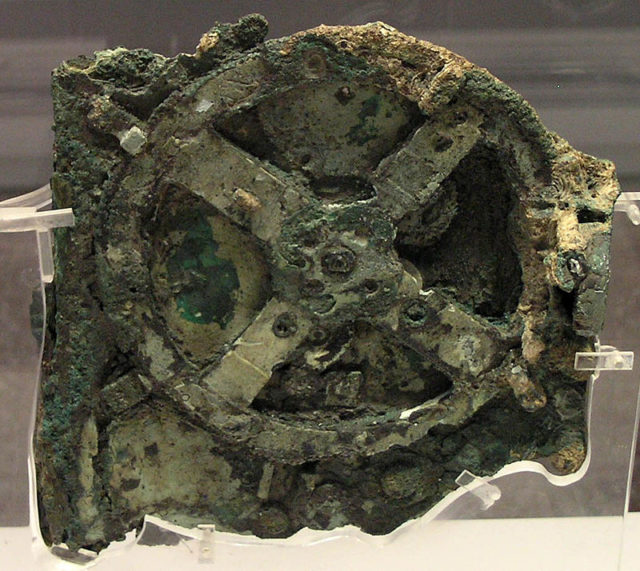An international team of archaeologists that was led by the Woods Hole Oceanographic Institution and the Hellenic Ministry of Culture and Sports has found a 2,050-year-old human skeleton during the digging of the famous Antikythera shipwreck.
The Antikythera was a Roman-era shipwreck that dated back to 85 to 50 BC.
It is located on the east side of the Greek island known as Antikythera, close to Crete at the crossroads of the Mediterranean and Aegean Seas.
The Anitkythera is believed to have carried looted treasures from the coast of Asia Minor to Rome to support a triumphal parade that was being planned for Julius Caesar.

The wreck had been found in 1900 by a group of Greek sponge divers that were on their way to Tunisia.
They took shelter from a storm close to the island, choosing to search for sponges while they were waiting for calmer conditions.
The early diggings at the site unveiled a wealth of findings that today are in the National Archaeological Museum located in Athens, Greece.
These include glassware, coins, jewelry, horses, life size marble, and hundreds of works of art, including the 7-foot tall statue of Herakles.
The finding that was the most surprising was the corroded remains of a complicated device known as the Antikythera Mechanism.
It is thought to be an early analog computer that was used to record important events such as agricultural activities, the early Olympic Games, and religious rituals.
It had to ability of predicting movements of the Moon, Sun, and many planets as well the timing of the lunar and solar eclipse years into the future.
In 1976, the famous French oceanographer Jacques Yves Cousteau and his squad came back to the wreck and found around 300 more objects. These included the skeletal remnants of the crew and passengers.
The archaeologists found a human skull that included the teeth and jaw, long bones of the legs, ribs, arms, and other remnants.
Some other parts of the skeleton are still stuck on the seafloor, waiting to be dug up during the next phase of the operation.
If enough usable DNA has been preserved in the bones, it might be possible to find out what the ethnicity and what the geographic origin was of the shipwreck victims.
With all odds against it, the bones endured for over 2,000 years at the bottom of the sea.
They seem to be in fairly good shape, which is an incredible find. This had been stated by Dr. Hannes Schroeder, an expert in ancient DNA at the Natural History Museum of Denmark in Copenhagen.
Within days of the discovery, Foley had invited Schroeder to examine the remains.

They wanted to know whether they could access the genetic material from the bones. When Schroeder was on his way to Antikythera he had his doubts. Yet when he removed the bones from their bag he was actually pleasantly shocked.
The material was a little chalky, yet overall they looked well-preserved and Schroeder had agreed to extract the DNA from the bones when permission is given by the Greek authorities.
It could take around a week to discover if the sample has any DNA which everyone is excited about. After that it could perhaps take a couple of months to analyze and sequence the results, Sci-News.com reported.
Archaeologists can study the human past with objects our ancestors have made.
With the Antikythera shipwreck, we are not yet able to connect directly with these persons who had sailed and died on the ship Antikythera.
